Want to grow your own stunning native garden? Here are 15 tips for success, gleaned from long experience designing and growing native gardens.
We are fortunate to live in a country with a unique flora, unlike that anywhere else in the world. And that provides the opportunity to create stunning native gardens. Here are tips for what to consider as you go about your design and implementation.
Tip 1: Garden design is an art.
A garden is an artistic creation which evolves through time and is never ‘finished’. Gardeners are artists who follow their own vision and those of us who love Australian plants can gain inspiration directly from aspects of the Australian landscape.
Tip 2: Group plants with similar needs
Plants which occur naturally in the same environment – desert, for example, or coastal – usually look happy together in the garden because of their complementary adaptations as well as their similar requirements.

Grasstrees grouped together with acacias and banksias at North Head, all requiring similar growing conditions, image Heather Miles
Tip 3: Include sculptural plants for high impact
Sculptural Australian plants, like tree ferns, grasstrees, Gymea lilies and banksias, will distinguish a garden and deserve to be treated with respect and placed carefully in a garden landscape.
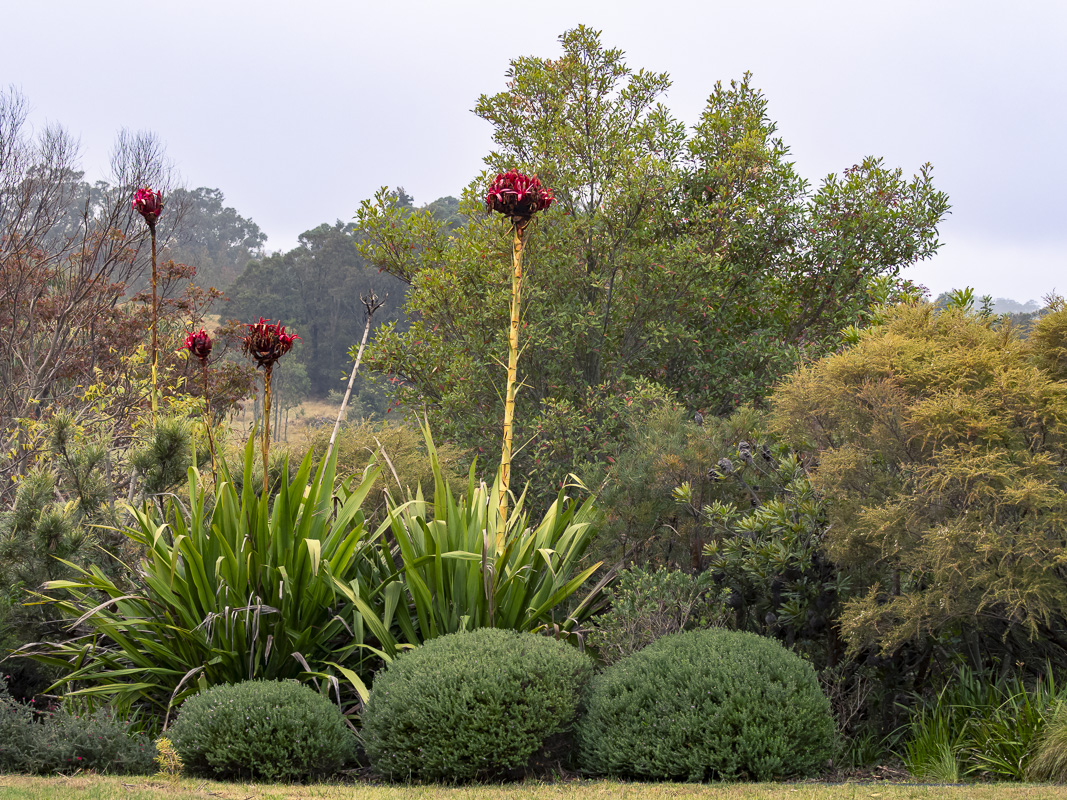
Sculptural plants used sparingly create high impact in the native garden. Plants here are Gymea Lilies (Doryanthes excelsa, undersown with mounded Westringia, image Heather Miles
Tip 4: Fill in the understorey
Three or four different species of the Australian groundcover plants – daisies, hibbertias (guinea flowers), scaevolas (fan flowers). can be chosen and repeated to create a lovely tapestry effect at ground level.

Repeated low growing shrubs and groundovers create a tapestry effect, image Heather Miles
Tip 5: Keep trees to extend the garden upwards
Even in a small garden, a tree of the appropriate size such as a smaller eucalypts extends the garden upwards. It acts as a focal point as well as being a magnet for birds.
Tip 6: Look at shapes of plants and shapes between plants
Don’t just look at the shapes of plants in a garden. Also look at the shapes of the spaces between plants. The balance of ‘mass’ and ‘void’ should be satisfying.

Shapes and textures complement the spaces in the garden, image Heather Miles
Tip 7: Daisies and grasses complement rocks
Australian daisies and grasses combine nicely with rocks. This creates a pleasing contrast of soft and hard textures. The clumped or sprawling daisies and tufted grasses complement the definite curved or straight lines of rocks.
Tip 8: Use fine foliaged plants beside water
A huge variety of fine foliaged tufted Australian plants look excellent beside water. Consider rushes, sedges and lilies, either upright or weeping. There are shrubs and small trees too with weeping foliage which is very appealing when reflected in water.
Tip 9: Add touches of formality
A sympathetic formal touch can bring solidity to the fine foliage of many Australian plants. Elements such as a stone wall, paving of appropriate colour and outline or sculpture work well.
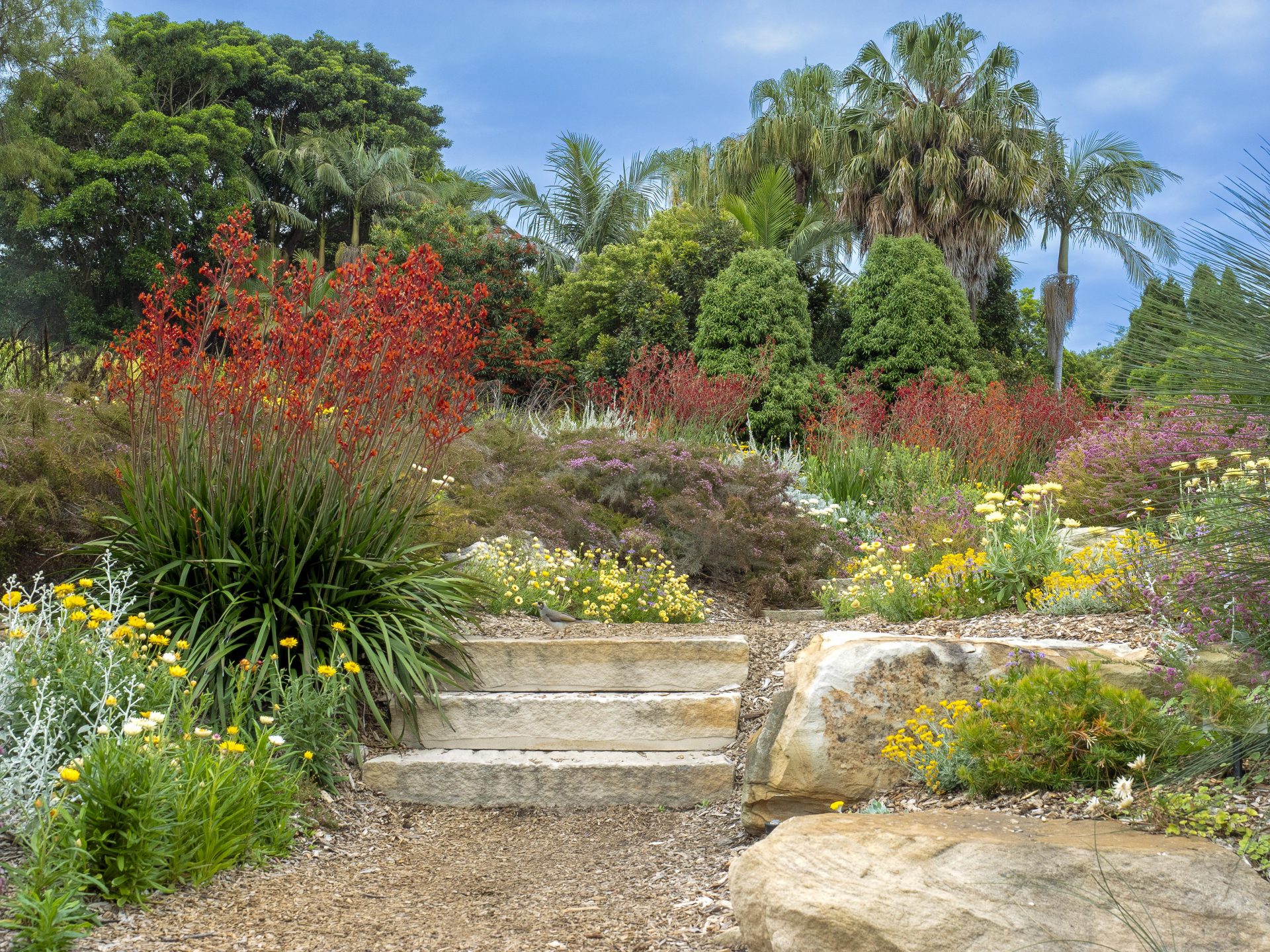
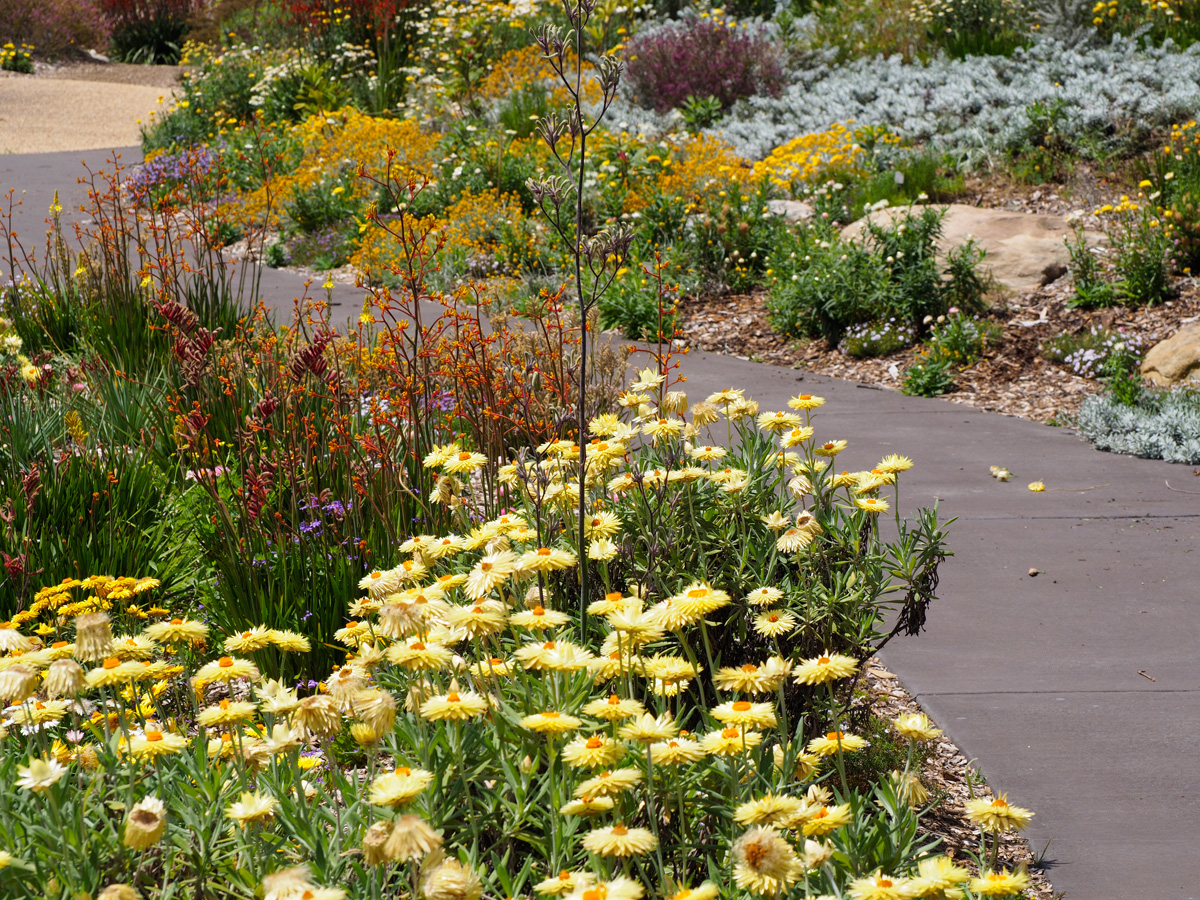
Paving brings solidity to the fine foliage of many Australian plants, images Heather Miles
Tip 10: For lushness, choose rainforest plants
Australian rainforest plants continue to gain popularity because of their colourful new foliage, flowers and fruit. Their glossy green leaves of medium size blend well with exotic plants.
Tip 11: Hedges are in for a touch of formality!
There are many small-leaved Australian plants (eg. lilly pillies, melaleucas, leptospermums, westringias) which can be pruned and treated formally for hedges or even topiary. They can also be used as a focal point among less formal shrubs.
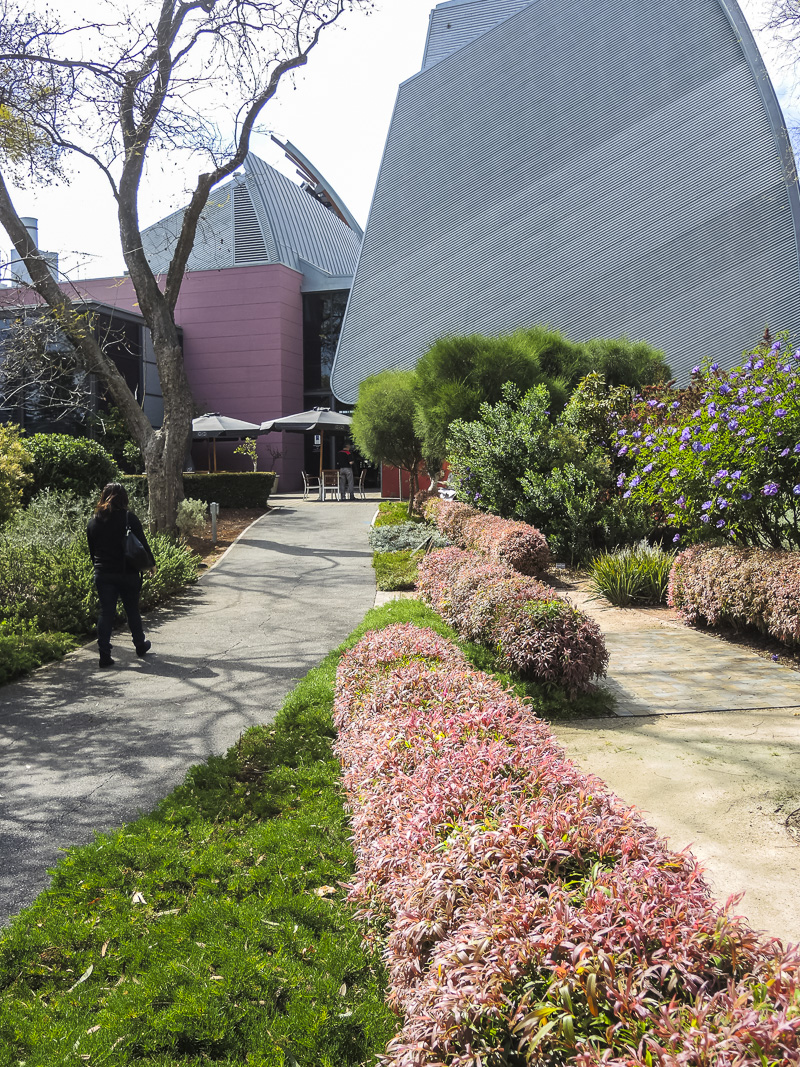
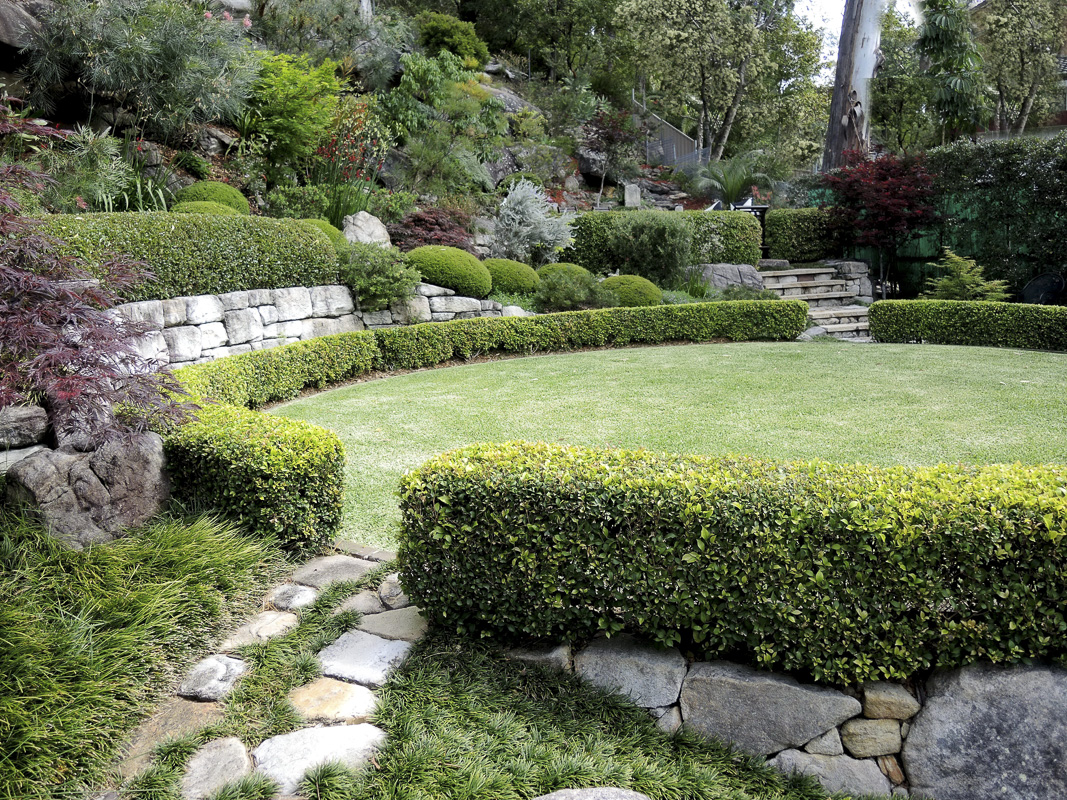
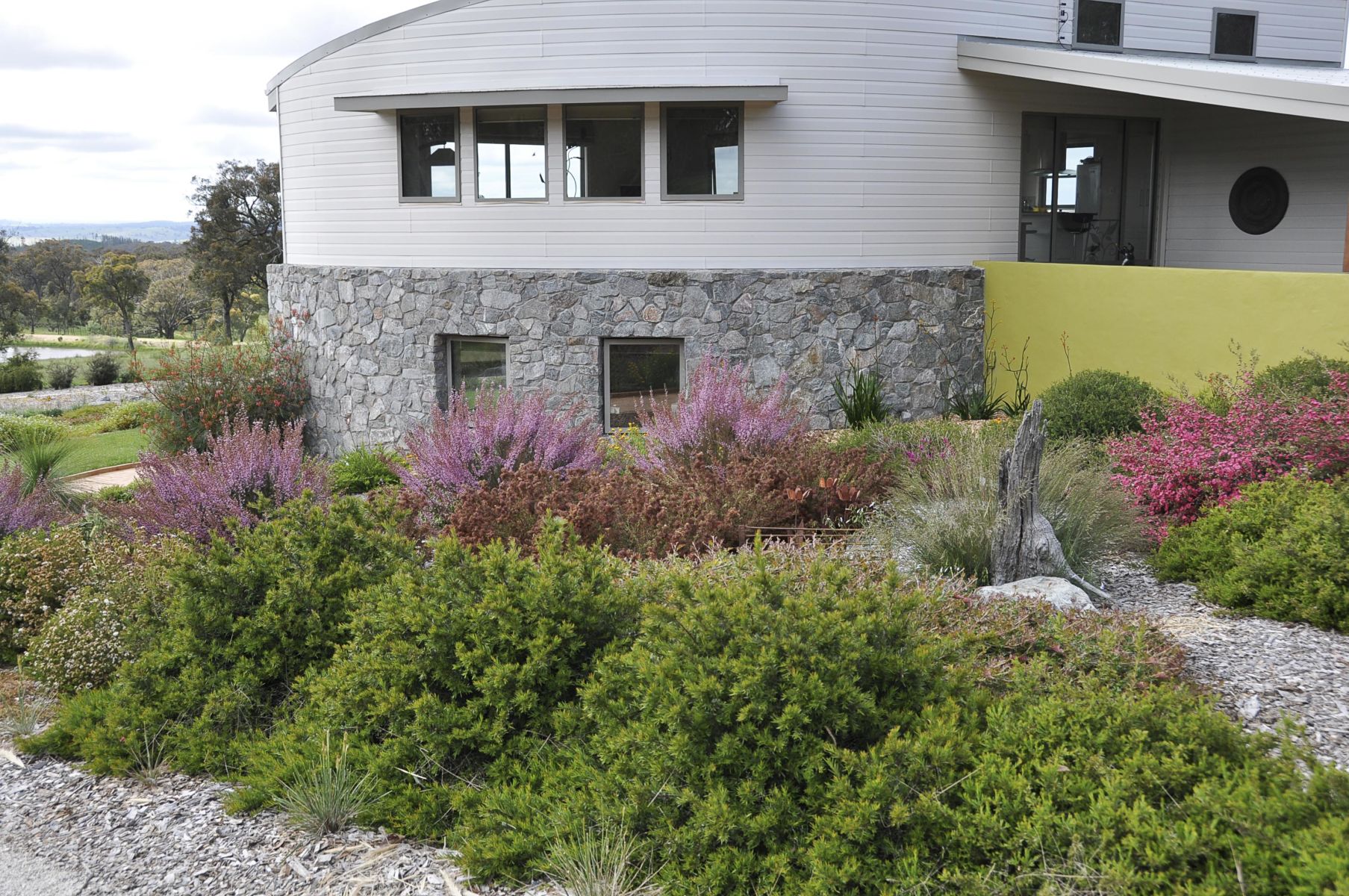
Tip 12: Mass your garden beds
From the variety of Australian shrubs available, it is possible to create stunning massed or layered garden beds. Colour schemes can be vivid or subtle. The range of grevilleas are one possibility as are the salt bushes, callistemon, and wattles. Remember to tip prune.

Layered gardens can be created from the wide range of plants now available. This display was on a rooftop and gives a spacious feel. The garden was designed by Clarence Slockee. Image Heather Miles
Tip 13: Grow nurse plants
The rapid growth of some large shrubs or small trees, in particular some acacias, is beneficial for succession planning. They are ‘nurse’ plants for a screen and shelter while slower growing plants are being established.
Tip 14: Create sections of low shrubs to give a spacious feel
A garden of low shrubs (less than 1m), pruned if necessary to maintain this height, gives an open and spacious feel to the garden.

Low growing shrubs and groundcovers allow a feeling of spaciousness, image Heather Miles
Tip 15: Consider foliage to create texture and form
The variety of foliage of Australian plants is amazing, in form texture, colour – from large and dramatic to tiny, delicate leaves – and many attractive effects can be achieved with foliage alone.
There are a number of excellent plant databases to draw on to select plants that are right for your region.
Australian Plants Society NSW Plant database
See links to all the native plant societies around Australia here – scroll down to the section about Joining a society.
Adapted from an article by Diana Snape, Nov 1997, Garden Design Study Group, editing and images Heather Miles
 Australian Native Plants Society (Australia)
Australian Native Plants Society (Australia)